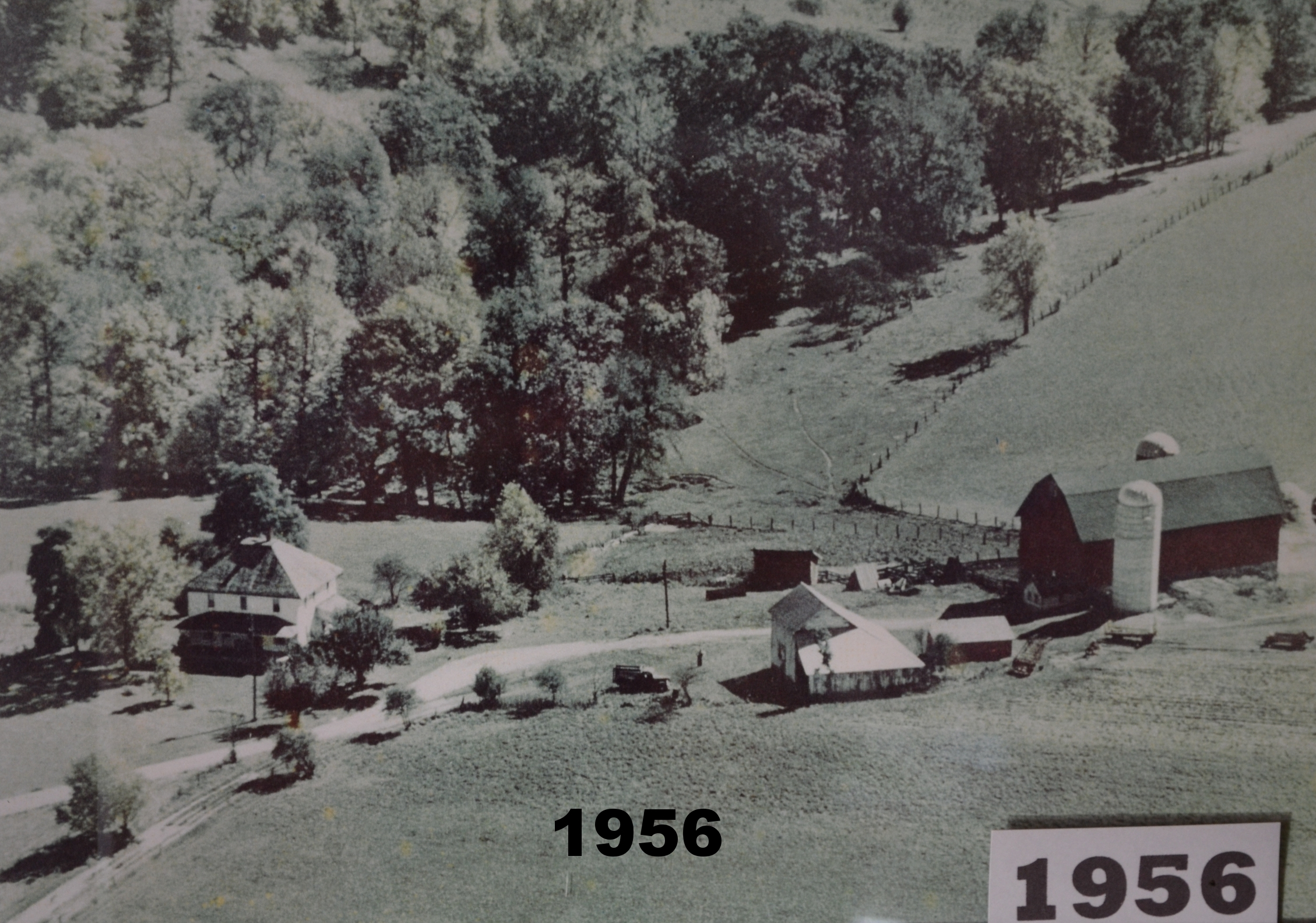

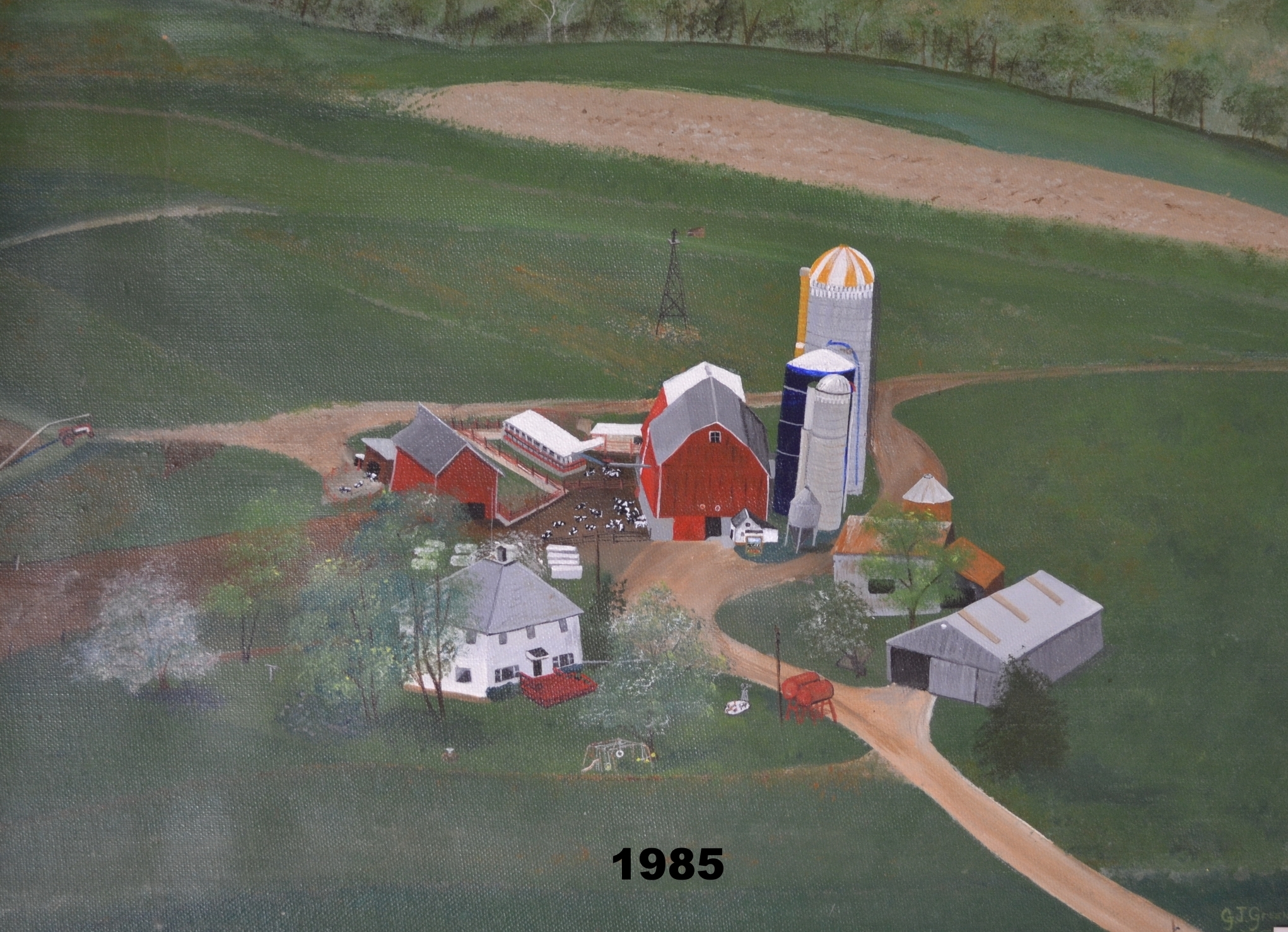
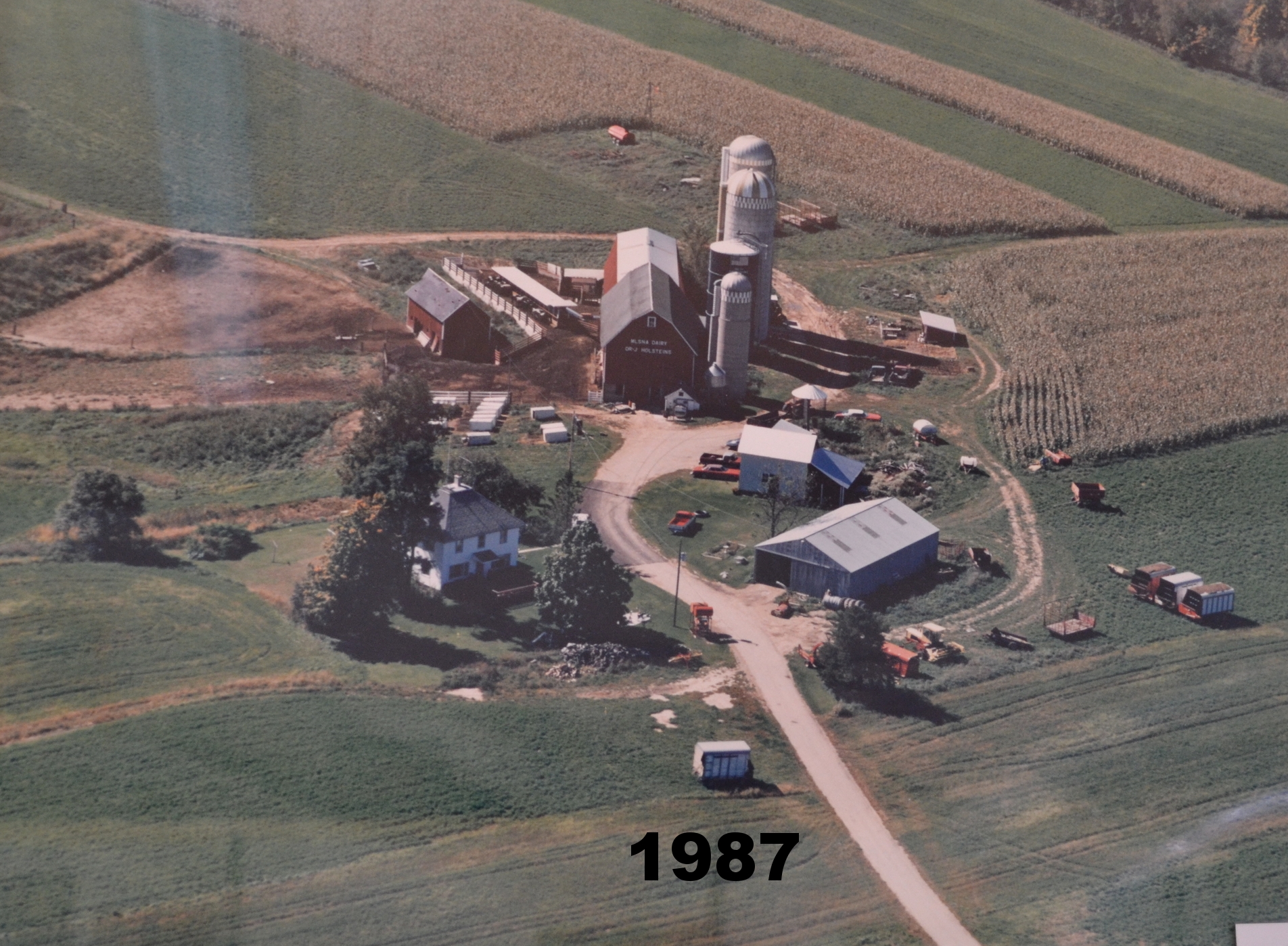
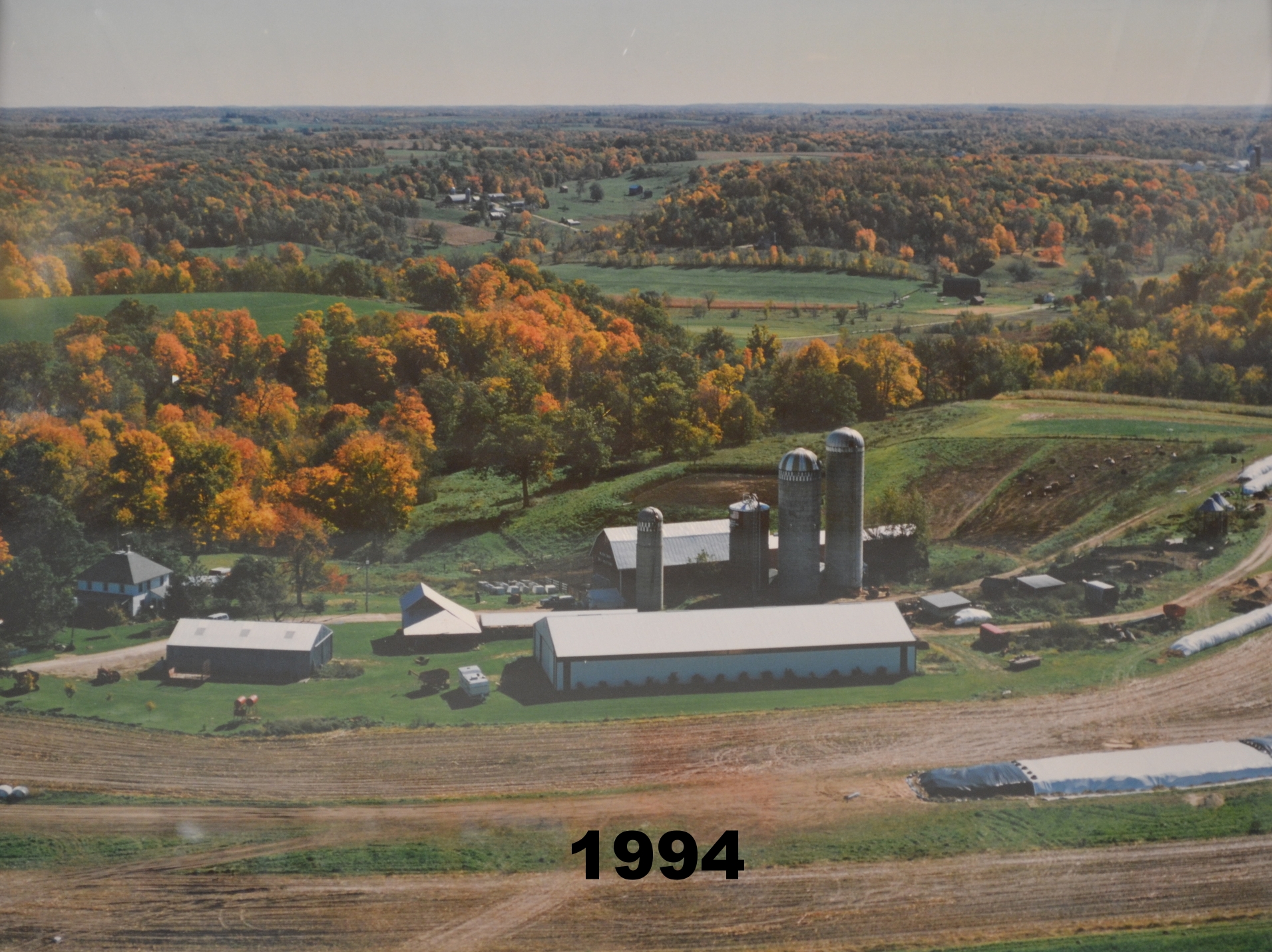

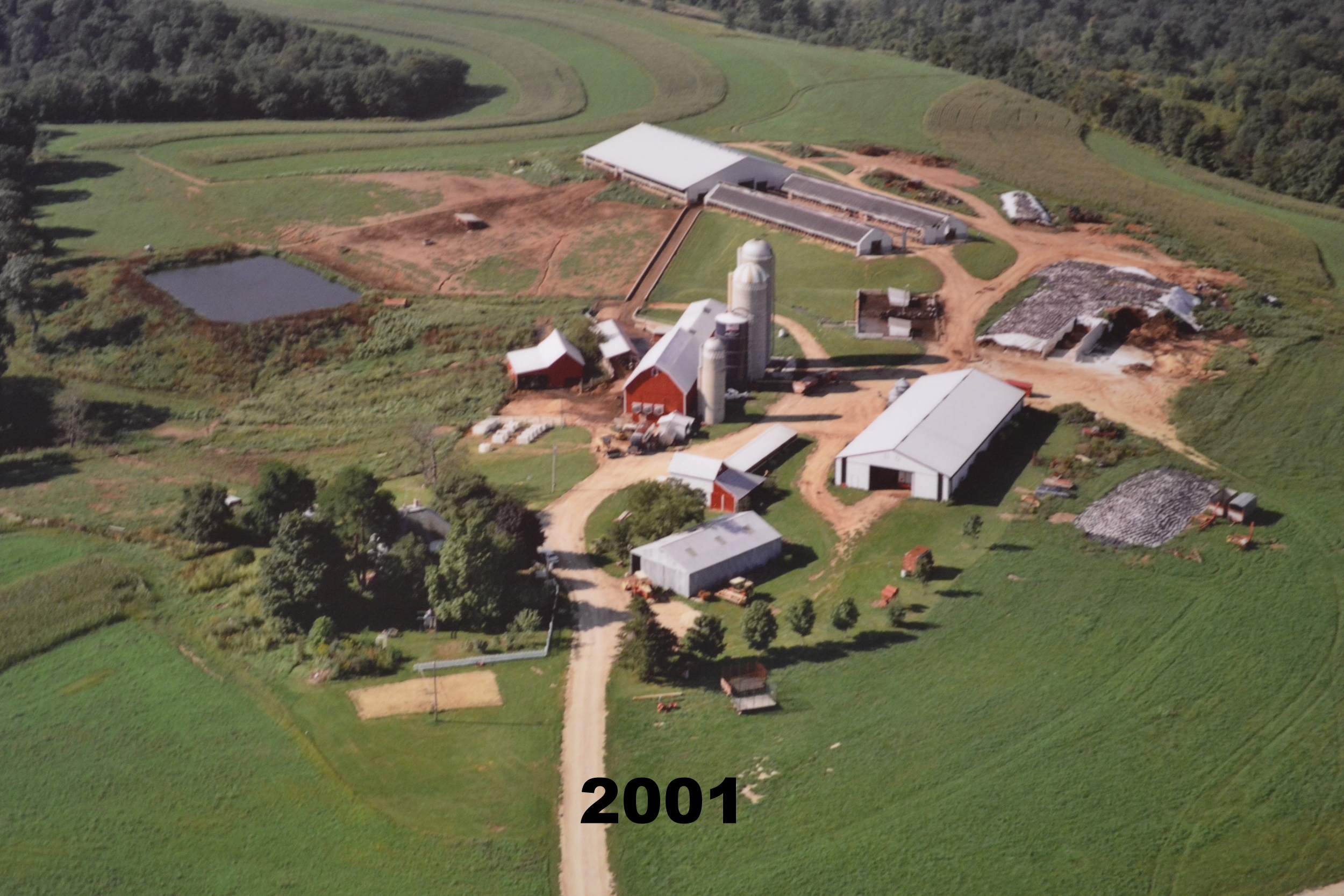
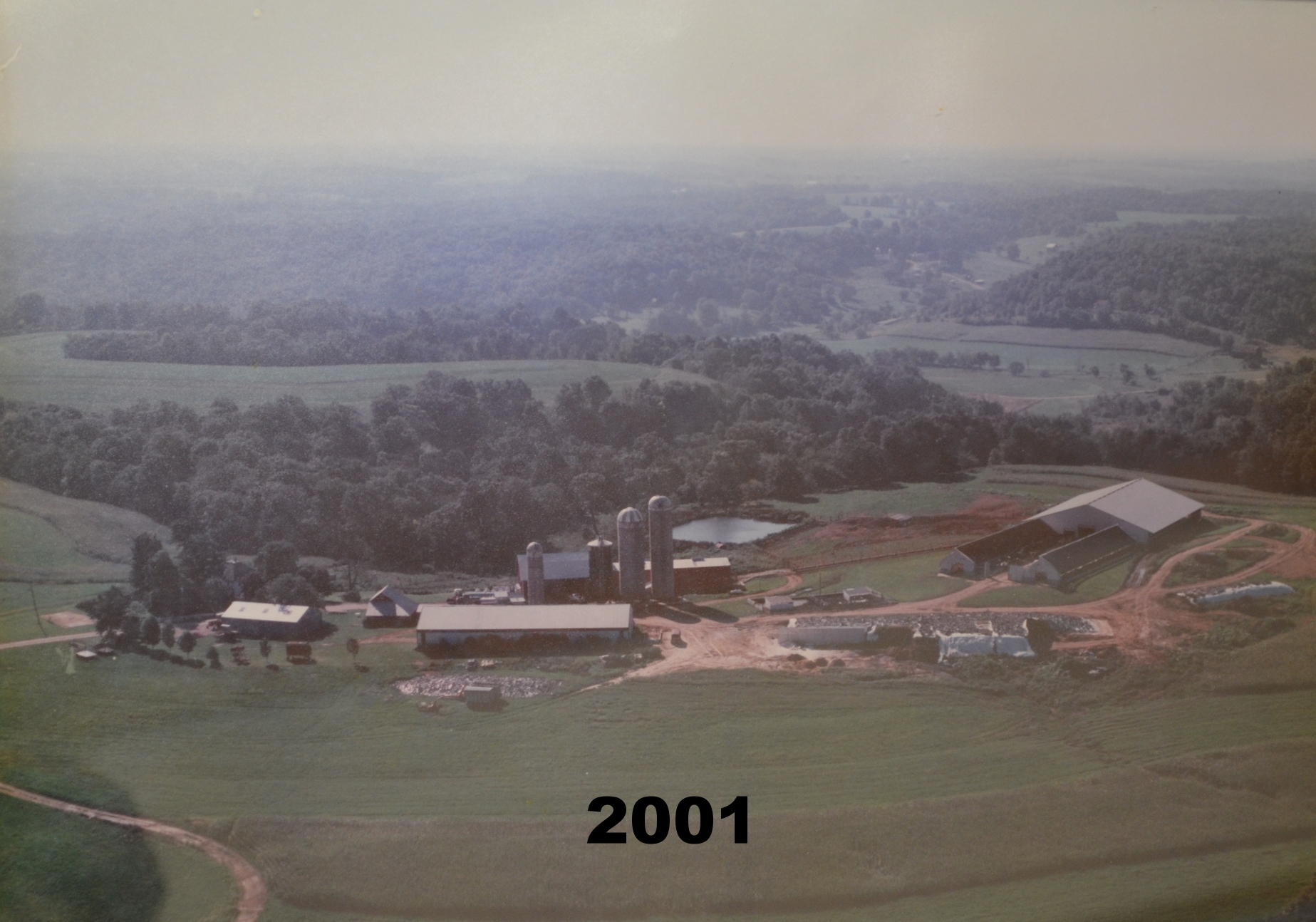
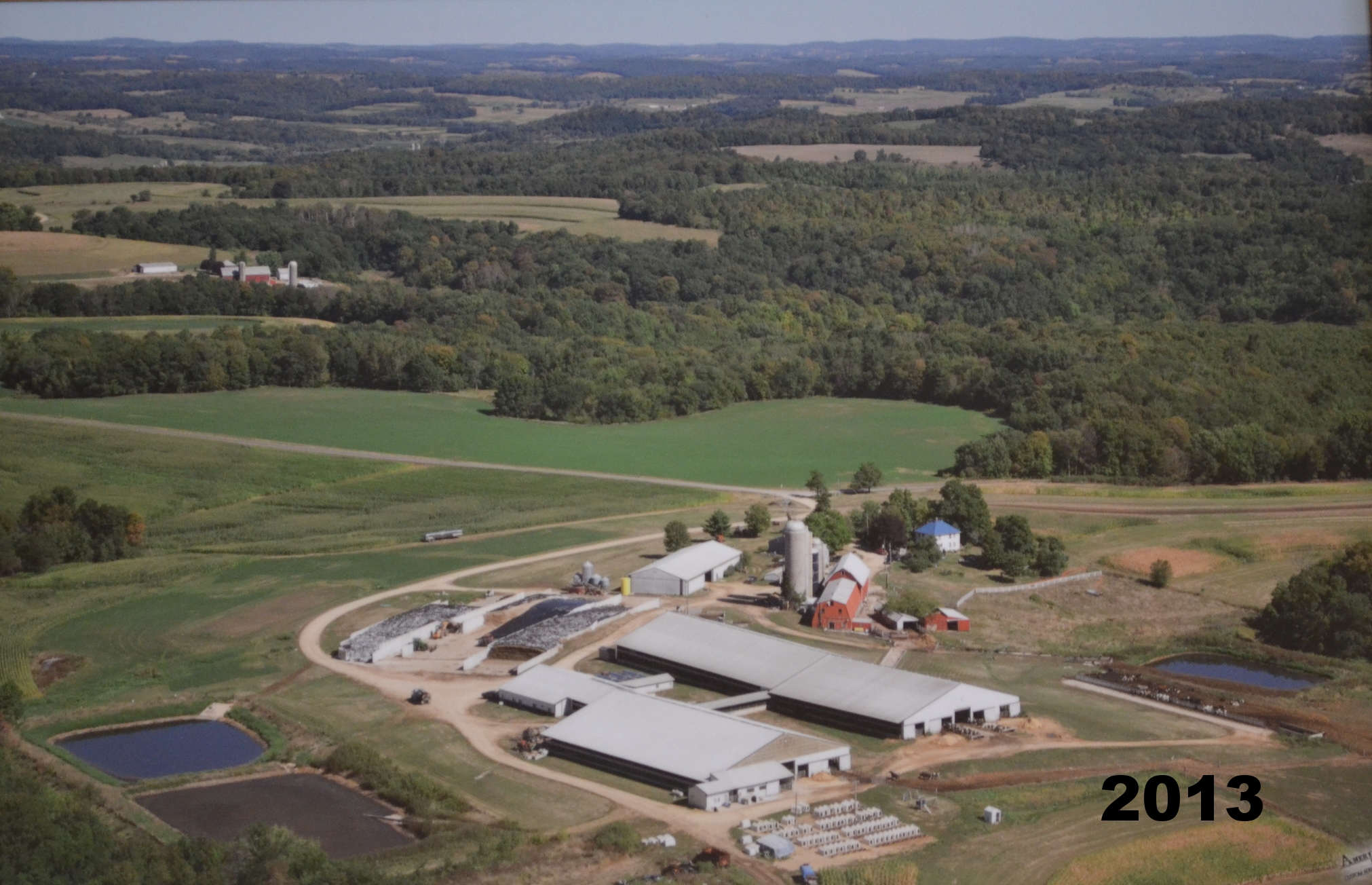
Farm History
- In 1978 Jim Mlsna bought what would later become Ocooch Dairy from Albin and Jeanne Shaker.
- Jim purchased a herd of Registered Holsteins from New York, by fall of 1978 he was milking 40 cows.
- The first addition was made on the original tie stall barn in 1981, creating enough stalls for Jim's then 75 cows to be milked.
- In December of 1995 the first greenhouse structure was erected, a second would follow in 1996.
- Also in 1996, the tie stall barn was renovated and a walk-thru flat barn parlor was installed at one end. Jim and family were milking 200 cows.
- The first modern tin roof freestall barn went up in 1999, it contained 200 stalls.
- A transition facility for pre-fresh, post-fresh, and hospital animals was built in 2005. A manure storage system that includes a 2-stage lagoon was also created this year.
- In 2006 the greenhouses were removed and replaced with another modern freestall barn. Ocooch worked with the Vernon County Land and Water Department to install a system to contain run-off water on their farm.
- A new milking system was built in 2008, replacing the flat barn parlor. Ocooch Dairy was milking 550 cows when the DeLaval Double 12 parallel parlor was installed.
- In 2014 a shop was erected, complete with a wash bay and oil-changing pit.
- Summer 2015 a preexisting structure was altered to create "The Pavilion," home to 4-7 month old heifers.
- Currently under construction at Ocooch Dairy is a tunnel-ventilated freestall barn. One side houses pregnant heifers, while milking cows and dry cows populate portions of the other side.
making changes
The growth and changes endured by the farm over the last 37 years have made it possible for us to today, in 2015, milk 650 cows and have the involvement of 6 family members. The new milking system and modern freestall barns help to increase labor efficiency and create a better working environment for our team. Our cows no longer have to walk down an uncovered lane during unfavorable conditions and get to spend less time waiting to be milked and more time eating and resting. And we get to spend more time with our families.
New milking center built in 2008 allows us to milk more cows in a shorter amount of time.
Utilizing technology
In addition to the new structures going up around the farm during the last few years, we have also incorporated technological advances that are helping us become more successful. Along with the new parlor we also added the use of computerized system that would allow us to track milk weights on every cow. Each cow gets one of these RF-ID (radio frequency identification) buttons as a calf and is used as a tool in herd health and management. For additional ways we have used technology, specifically as it relates to energy and water conservation, check out the section on Environment.


